By Dan Weisz
So there I was, scanning the flotilla of ducks in the lake at Kennedy Park in search of winter visitors when an Osprey appeared and began to fly back and forth over the lake in search of a meal.
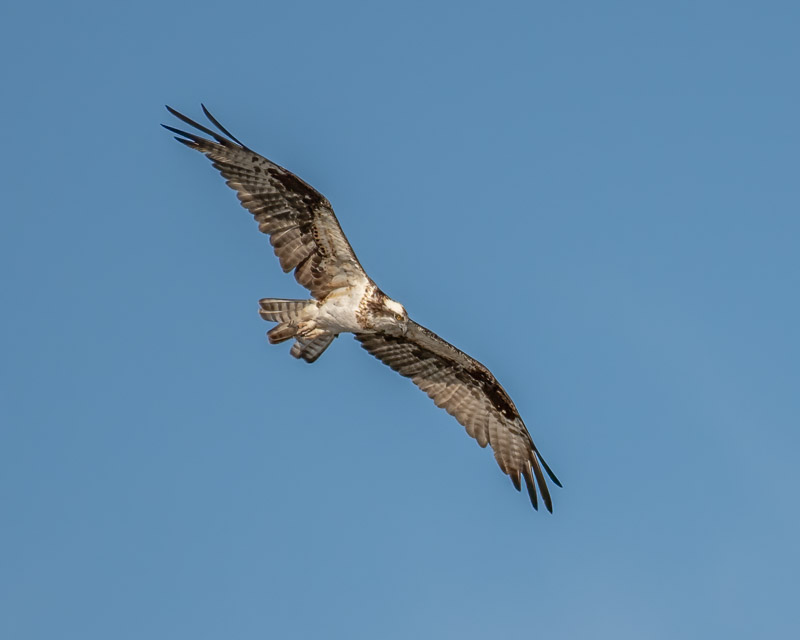
Osprey are large raptors found on every continent in the world except for Antarctica. (There are three raptors with this distinction: https://www.birdnote.org/listen/shows/three-worldwide-raptors ) Osprey are unique as raptors for having a diet almost exclusively of live fish. Osprey can be found over any open body of water with an abundant supply of fish, whether fresh water or salt water, and, with a wingspan of five feet Osprey are easy to spot in the air.
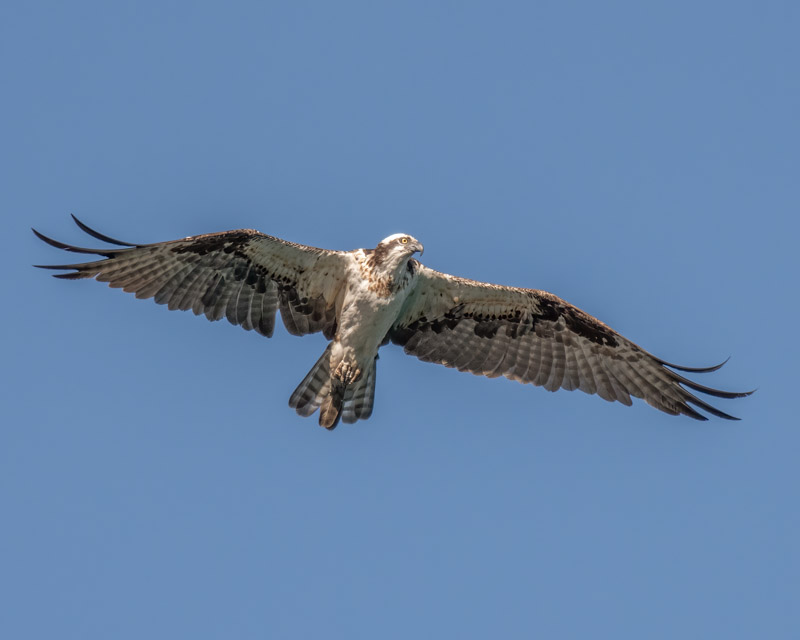
Osprey will fly with a kink in their wings, forming an “M” shape when seen from below. Also note the dark patch on their elbows where their wings bend. This bird is a female, easily recognized by the brown “necklace” she is wearing. The necks of males are plain white.
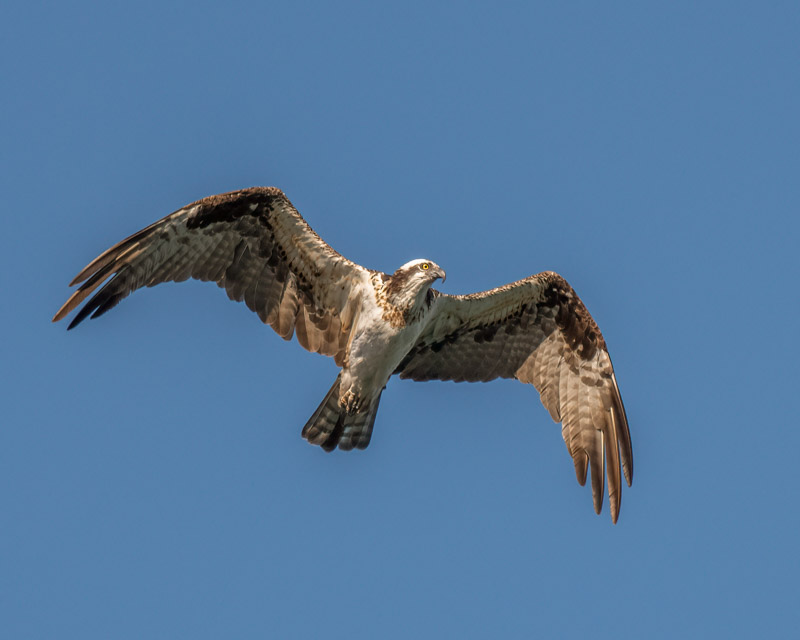
Osprey will dive into the water, feet first, when they spot a fish close to the surface. And then, successful or not, they rise up again. Did she catch something this time?
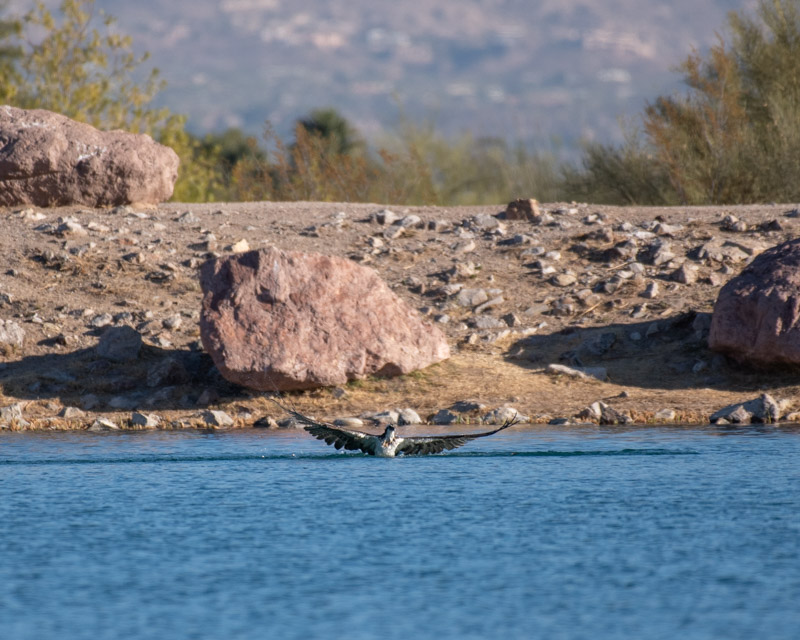
In the 50’s, Osprey were another species of birds whose population crashed dramatically due to DDT and other contaminants. Osprey studies provided key evidence in court in the 70’s to block continued use of persistent pesticides. With DDT banned, the Osprey population recovered rapidly and, Phoenix-like, the Osprey arose again. In the photo below, the Osprey rises up from the water using powerful strokes of its large wings to become airborne.
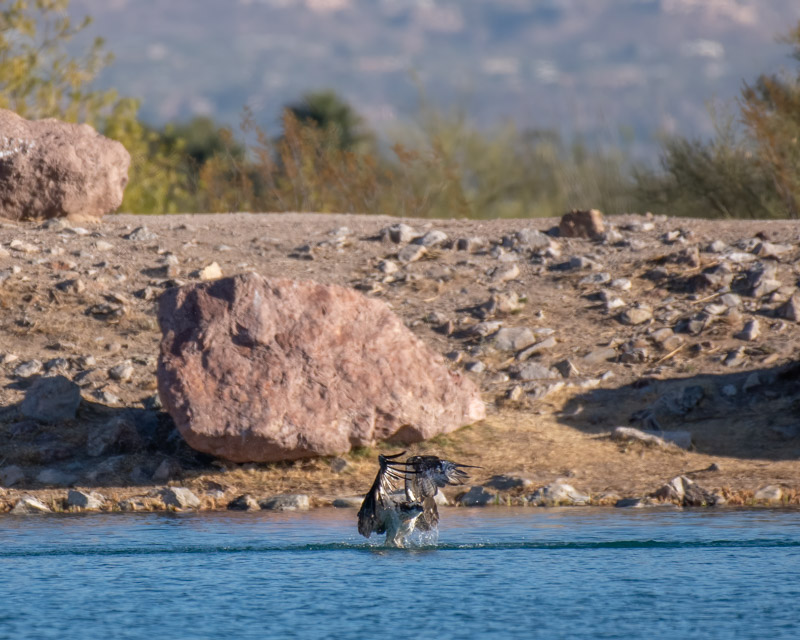
And with a fish locked in its talons, the Osprey begins its flight across the water.
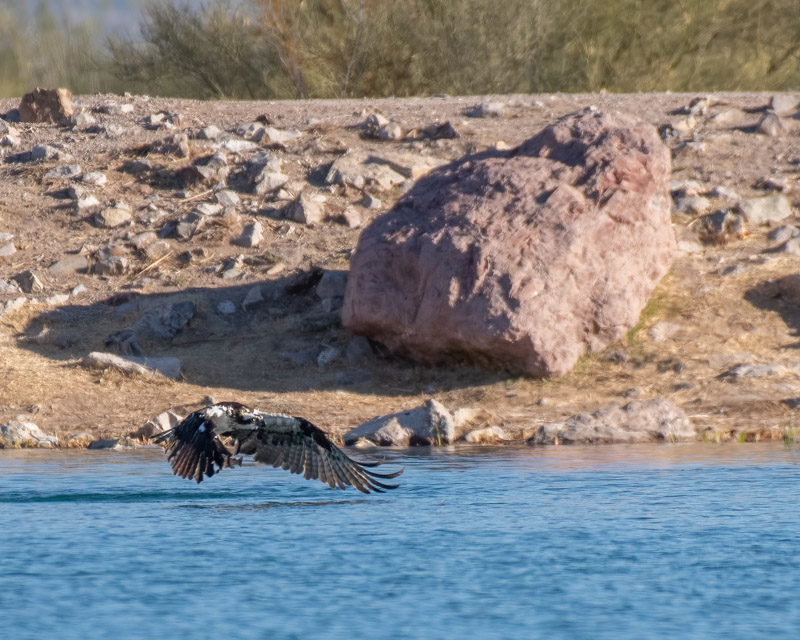
The Osprey circled around the lake slowly, gaining elevation as it circled.
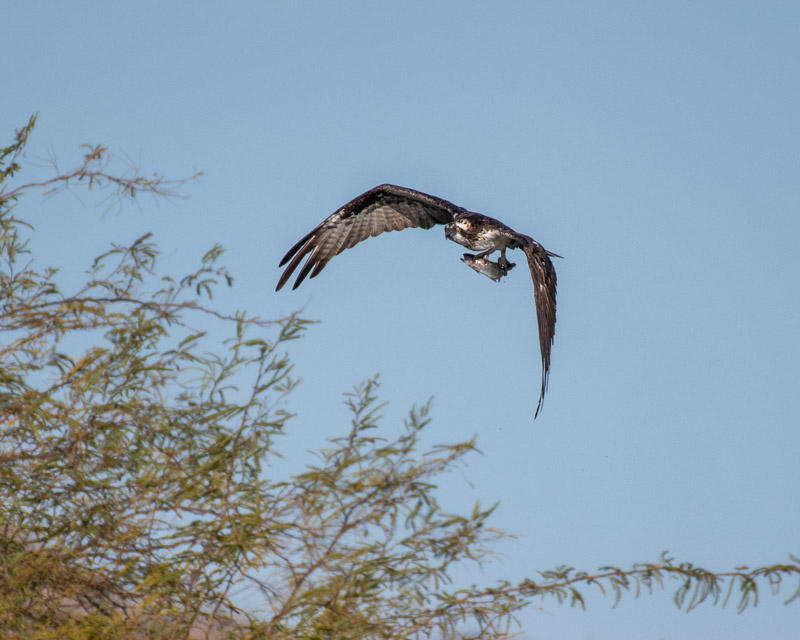
“You look left, I’ll look right”
The Osprey looked around as it flew. Osprey have an interesting way of holding the fish as they fly. They hold the fish in a forward-facing position, almost torpedo like. Lining up the fish head-first helps to reduce wind resistance as the bird flies.
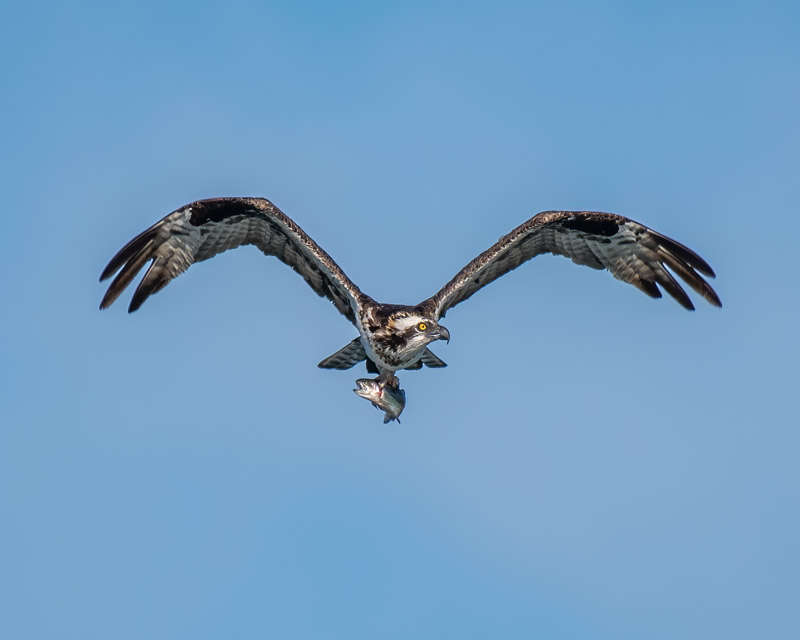
Here are a few flight shots to show the size and grace of this raptor’s wings as it moves through the air.
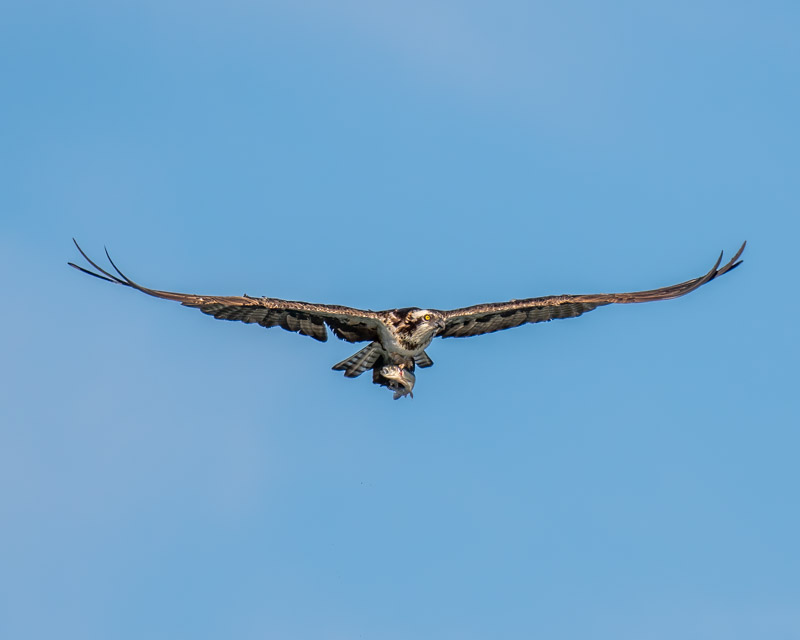
And then the Osprey turned to its right to head towards the top of a nearby radio tower where it would feast on its prey.
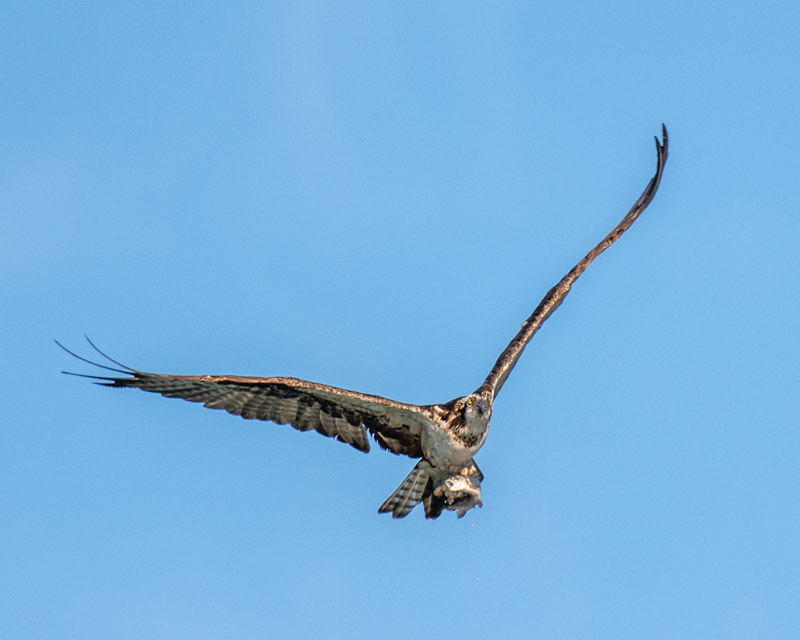
Once it turned, it continued with strong wingbeats, here pushing downward.
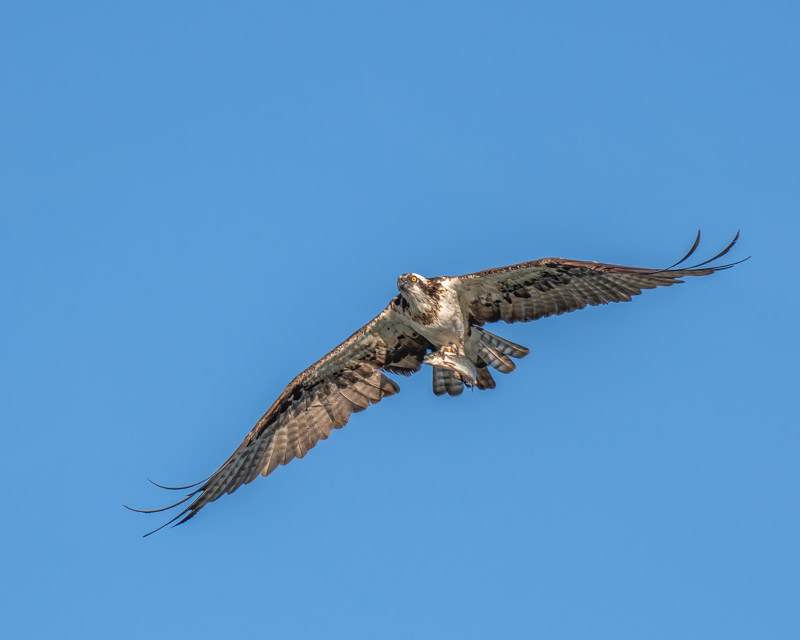
I believe the fish is a rainbow trout. Kennedy Park lake is stocked with several species of fish and is a popular urban fishing spot.
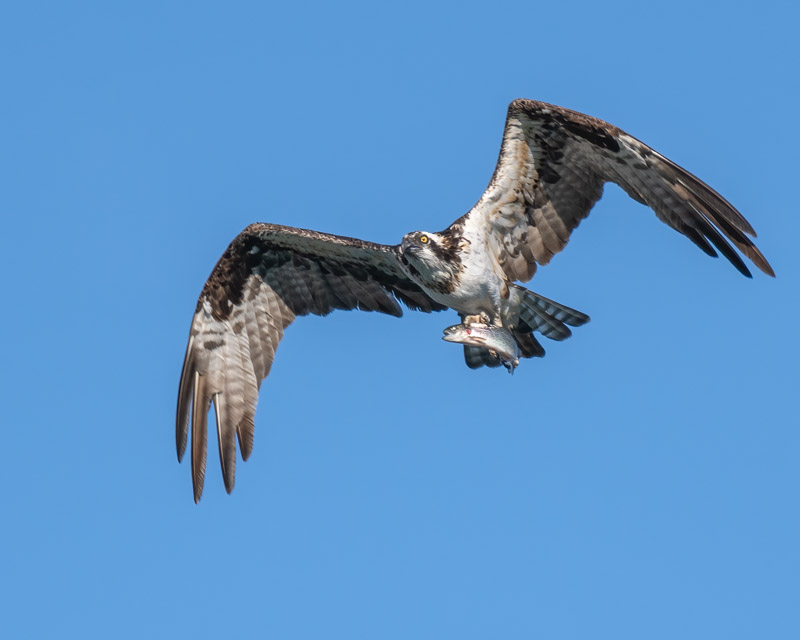
With a clear intent and purpose, the Osprey flies past the wispy clouds in the sky heading up towards its perch.
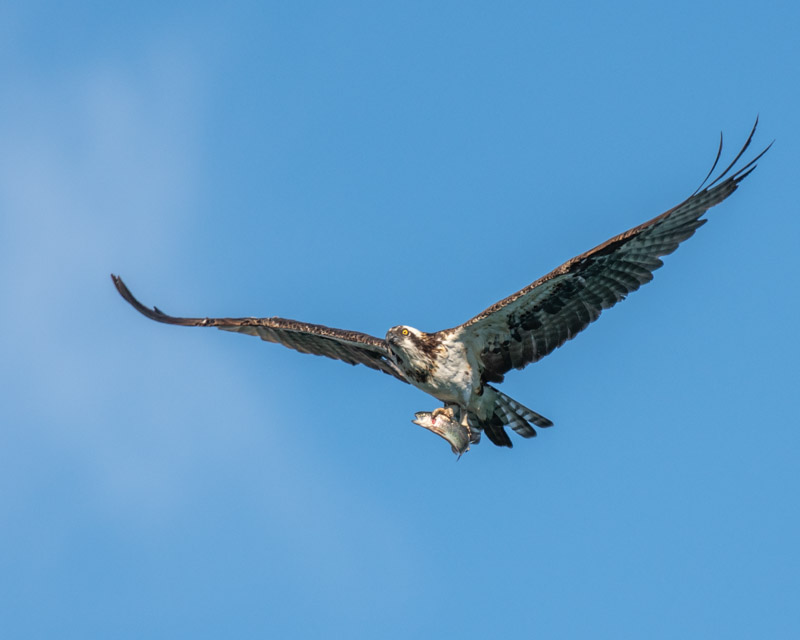
As the Osprey makes a final turn towards the tower, you can see how it has one foot forward and one backwards to maintain the fish in a head-first position.
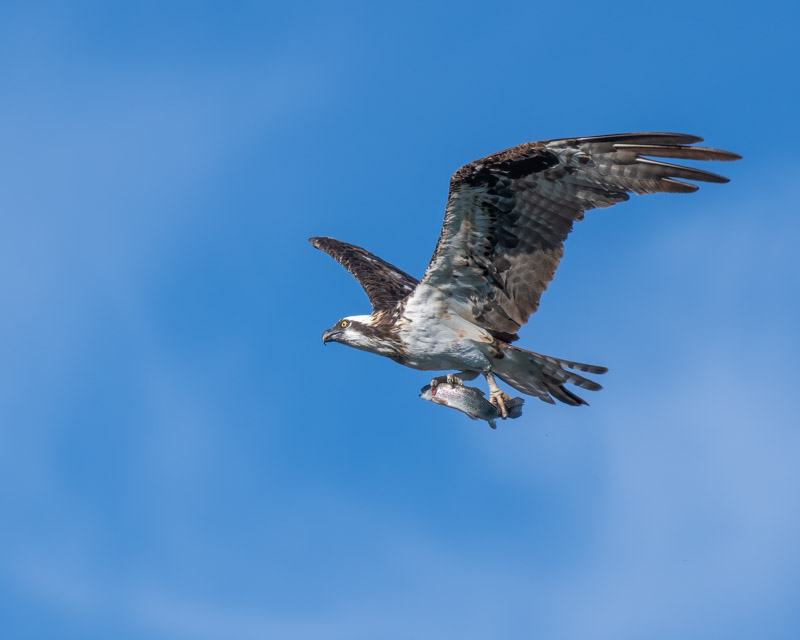
The Osprey began putting on the brakes.
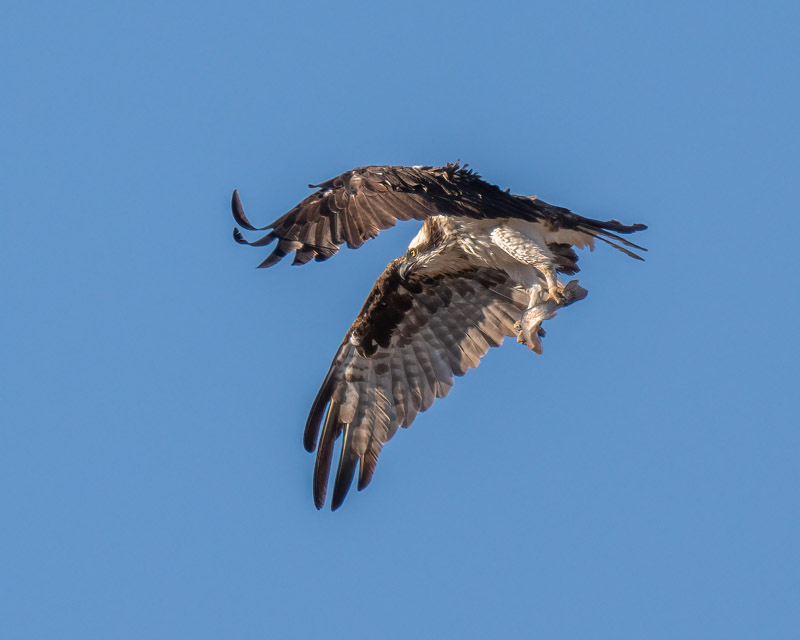
A large tree blocked my view as the bird reached its destination. I stepped around the tree and could see the Osprey on the tall tower. It looked around for a few minutes before beginning to feast.
Special moments like this can make my day! I love Tucson’s ‘wingter’ visitors
